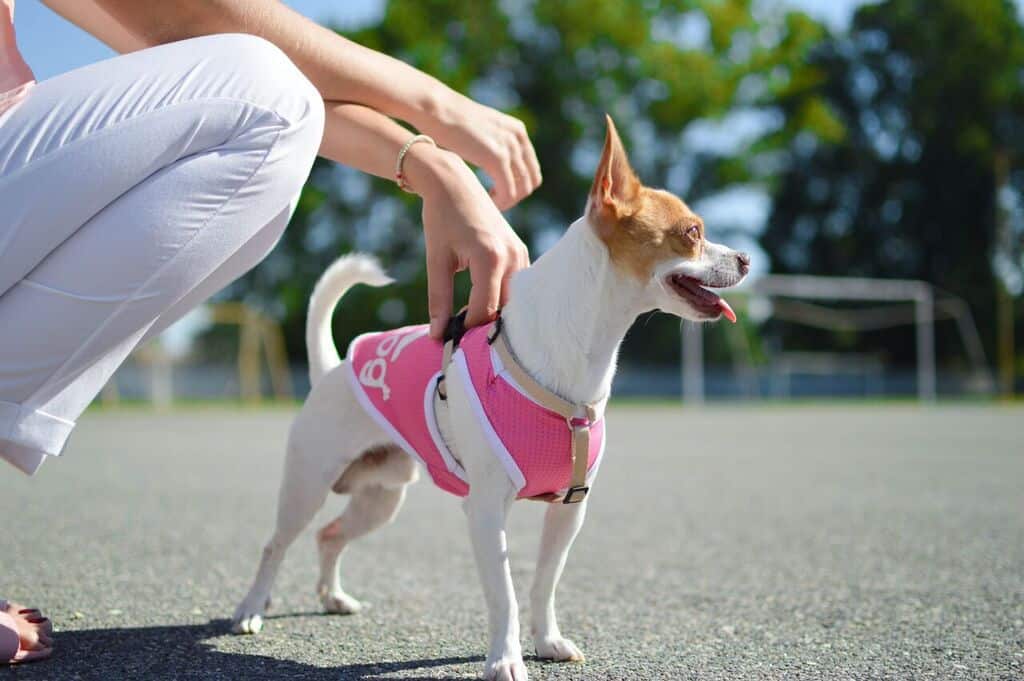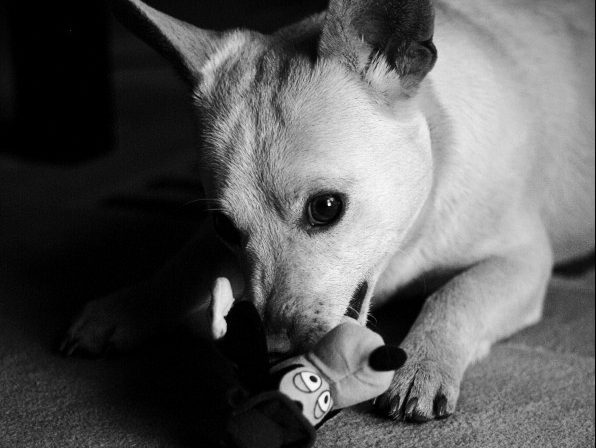Aggressive dog behavior can be a result of a number of factors. Often, the trigger is something from the dog’s years as a puppy that was never extinguished. Other times the problem comes out of the dominance factor between the owner and dog. What’s important to remember is that aggression in dogs must be addressed sooner rather than later. If Dog owners allow them to behave aggressively over a long period of time, those dogs will be harder to control.
“The term “aggression” refers to a wide variety of behaviors that occur for a multitude of reasons in various circumstances. Virtually all wild animals are aggressive when guarding their territories, defending their offspring and protecting themselves. Species that live in groups, including people and dogs, also use aggression and the threat of aggression to keep the peace and to negotiate social interactions.
“Aggressive” Can Mean a Whole Host of Things
To say that a dog is “aggressive” can mean a whole host of things. Aggression encompasses a range of behaviors that usually begins with warnings and can culminate in an attack. Dogs may abort their efforts at any point during an aggressive encounter. A dog that shows aggression to people usually exhibits some part of the following sequence of increasingly intense behaviors:
- Becoming very still and rigid
- Guttural bark that sounds threatening
- Lunging forward or charging at the person with no contact
- Mouthing, as though to move or control the person, without applying significant pressure
- “Muzzle punch” (the dog literally punches the person with her nose)
- Growl
- Showing teeth
- Snarl (a combination of growling and showing teeth)
- Snap
- Quick nip that leaves no mark
- Quick bite that tears the skin
- Bite with enough pressure to cause a bruise
- Bite that causes puncture wounds
- Repeated bites in rapid succession
- Bite and shake
Pet Parents Don’t Recognize the Warning Signs
Dogs don’t always follow this sequence, and they often do several of the behaviors above simultaneously. Many times, pet parents don’t recognize the warning signs before a bite, so they perceive their dogs as suddenly flying off the handle. However, that’s rarely the case. It can be just milliseconds between a warning and a bite, but dogs rarely bite without giving some type of warning beforehand.”
A Dogs Aggression Starts in a Puppy
When the dog is only 6 weeks of age, it can exhibit Aggressive dog behavior. Puppies around this age are at a particular phase that requires socialization and training to stave off inappropriate behaviors such as biting their own humans. Puppy training should continue for a minimum of 8 weeks, but can continue on into adulthood. Point being… to avoid future dog aggressive behavior, be certain that your puppy is properly socialized with other dogs and people by the time it is 14 weeks old.

Aggressive Dog Behavior
Genetics and heredity. Particular breeds are apt to be more aggressive than other breeds., but there are always going to be exceptions. A dogs living environment is the single most dominant factor in aggressive dog behavior. Harsh masters, limited socialization, as well as poor living conditions will all contribute to dog aggression. Dogs that have undergone trauma at the hands of another dog, his risk for developing aggressive behavior goes up considerably.
Often, aggression is a product of the group dynamics that occur in a pack of dogs. Aggressive behaviors can be committed to institute a pecking order. Posturing as well as biting are frequently behaviors dogs use to establish dominance. If you need to rein in a dog’s behavior early, then establish dominance early and be consistent.
Eliminating Aggressive Dog Behavior Once It Appears
When your dog reaches 14 months old, it has reached sexual maturity. If after this time, your dog has aggressive behaviors, you must take matters into your hands as soon as you can. Two of the keys are avoiding rewards for aggressive dog behavior and being the pack leader by your dog.

Your Dog Cannot Be the Leader of the Household
Your dog needs to be trained …either by you or someone who knows how to train dogs, to understand their limits and boundaries set by their owners. You are responsible for their feeding and walking and playing times through each day. If you forego that key element of making decisions for your dog, and you leave your dog to their own devises, they will realize that they can become the leader in your home.
Once a dog gets full command of a home, it is sometimes hard to get them to be a follower again. Now that…is an opportunity when your dog may end up being more aggressive. Your dog cannot be the leader of the household. All humans have leadership over dogs
There are times when dogs exhibit aggression as a way of defending themselves or when they are overly frightened. In other words, fear abets their aggression. Frequently, this results from faulty socialization or just plain bad dog rearing. Small children are oftentimes considered a challenger by dominant minded dogs. Therefore, you either keep to a minimum your dog’s exposure to young children or you train them to not prey on or nip or herd chem.
Obtain the assistance of a trainer, behaviorist, or in home dog trainer that can help get your dog respond more appropriately to social situations and triggers.
Get Professional Help Quick
When your dog behaves aggressively, you are faced with a serious problem. People can hold you liable for the violence your dog causes. Take heart, this aggressive dog behavior can be controlled and eliminated, even in dogs that are older. But it takes real commitment…a commitment that many cannot or will not undertake. If your dog ever expresses violent behaviors, then you must get professional help quickly. If someone is hurt by your dog, both you and your dog could be confronted with grim consequences and financial outlay.




